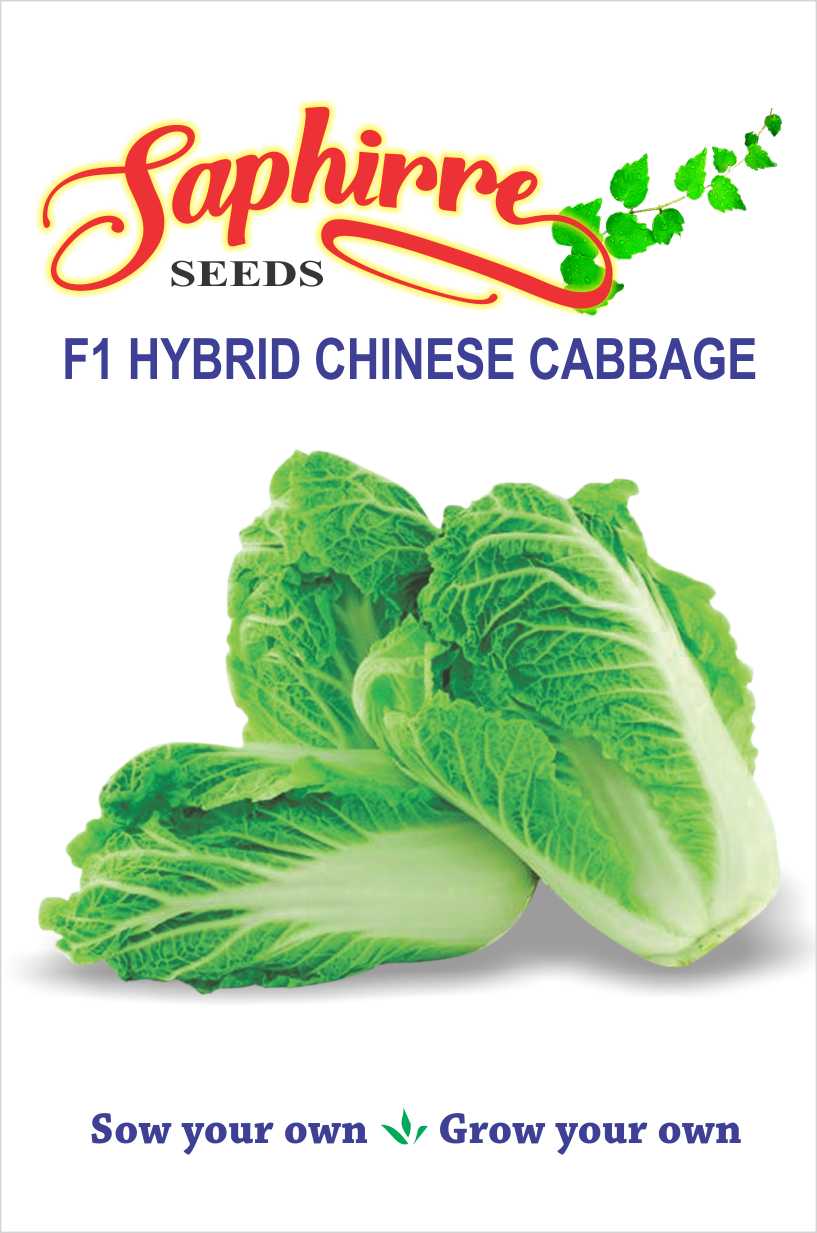Description
Cabbage
Cabbage (Brassica oleracea or variants) is a leafy green biennial plant, grown as an annual vegetable crop for its dense-leaved heads. Closely related to other cole crops, such as broccoli, cauliflower, and brussels sprouts, it descends from B. oleracea var. oleracea, a wild field cabbage.
Cabbage heads generally range from 1 to 8 pounds (0.5 to 4 kg), and can be green, purple and white. Smooth-leafed firm-headed greencabbages are the most common, with smooth-leafed red and crinkle-leafed savoy cabbages of both colors seen more rarely.This cool-season crop grows best when daytime temperatures are in the 60s F. Direct-seed or transplant spring crops for fresh use in summer.Plant fall crops for winter storage or sauerkraut.Lifecycle: annualEase-of-care: moderately difficult, Requires good soil, timely planting and protection from pests.
Planting And Care
- When transplants reach 5 inches tall, thin to make sure they are still the desired length apart
- (The plants you remove can be transplanted elsewhere in your garden) Fertilize 3 weeks after transplanting
- Keep soil moist with mulch and water 2 inches per week
- Start cabbage seeds indoors 6 to 8 weeks before the last spring frost
- See frost dates for your area here
- Harden off plants over the course of a week
- To prepare soil, till in aged manure or compost
- Transplant outdoors 2 to 3 weeks before the last expected frost date
- Choose a cloudy afternoon
- Plant 12 to 24 inches apart in rows, depending on size of head desired
- The closer you plant, the smaller the heads
- Mulch thickly to retain moisture and regulate soil temperature
- Practice crop rotation with cabbage year to year to avoid a build-up of soil borne diseases
- Although broccoli, cauliflower and cabbage are closely related, cabbage will not tolerate them
- Also avoid proximity to strawberries and tomatoes
- Cabbage can be grown near beans and cucumbers
Cabbage Chinese Wong Bok Care
- The planting season for cabbage is quite long
- Early cabbage should be transplanted as soon as possible so that it can mature before summertime heat
- If you have been wondering when to plant cabbage plants, you should know that several varieties are available at different maturity times so you can have a harvest all summer long
- When thinking about when to plant cabbage plants, you should remember that hardened plants can be very tolerant of frosts
- Therefore, you can plant these early in the spring with other cool season vegetables
- Late cabbage can be started during mid-summer, but remember that they won, t develop a head until fall
| Sunlight | Cabbage needs at least 6 hours of full sun each day; more is better. |
| Watering | Water regularly, applying 1 to 1.5 inches of water per week if it doesn t rain. |
| Soil | Requires well-drained soil, fertile soil high in organic matter, pH 6.0 to 7.5. Can tolerate slightly alkaline soil. This heavy feeder also needs plentiful, consistent moisture. |
| Temperature | Germination temperature: 45 F to 85 F – Will germinate at soil temperatures as low as 40 F. |
| Fertilizer | Fertilize plants again with a liquid fertilizer such as fish emulsion or 20-20-20 after they begin to develop new leaves and when they start forming heads. |
| Harvest Season |
|
Cabbage Chinese Wong Bok Uses
Medicinal Use:
- Cabbage is a good source of beta-carotene, vitamin C and fiber
- Studies suggest that it, as well as other cruciferous vegetables, may reduce the risk of some cancers, especially those in the colorectal group
- Purple cabbage also contains anthocyanins, which in other vegetables have been shown to have anti-carcinogenic properties
- Along with other cole crops, cabbage is a source of indole-3-carbinol, a chemical that boosts DNA repair in cells
- The Ancient Greeks recommended consuming the vegetable as a laxative, and used cabbage juice as an antidote for mushroom poisoning, for eye salves, and they prepared liniments with the plant to help bruises healThe cooling properties of the leaves were used in Britain as a treatment for trench foot in World War I, and as compresses for ulcers and breast abscesses
- Accumulated scientific evidence corroborates that cabbage leaf treatment can reduce the pain and hardness of engorged breasts, and increase the duration of breast feeding
Culinary Use:
- Cabbage is prepared and consumed in many ways
- The simplest options include eating the vegetable raw or steaming it, though many cuisines pickle, stew, saut, e or braise cabbage
- Pickling is one of the most popular ways of preserving cabbage, creating dishes such as sauerkraut and kimchee, although kimchee is more often made from Chinese cabbage
- Savoy cabbages are usually used in salads, while smooth-leaf types are utilized for both market sales and processing
- Bean curd and cabbage is a staple of Chinese cooking, while the British dish bubble and squeak is made primarily with salt beef and boiled cabbage








Reviews
There are no reviews yet.